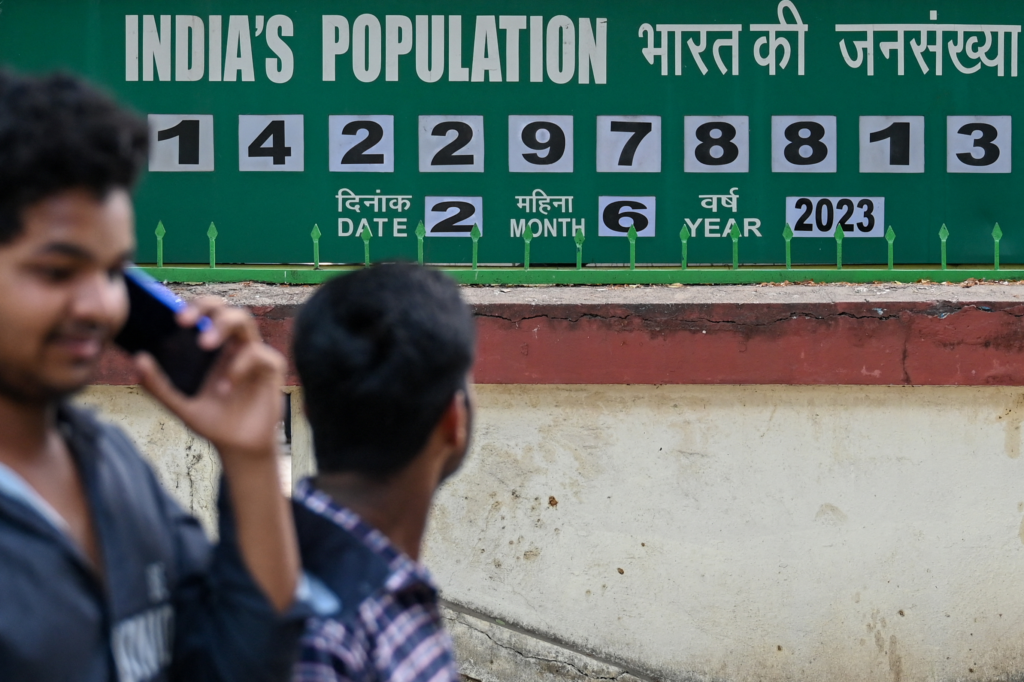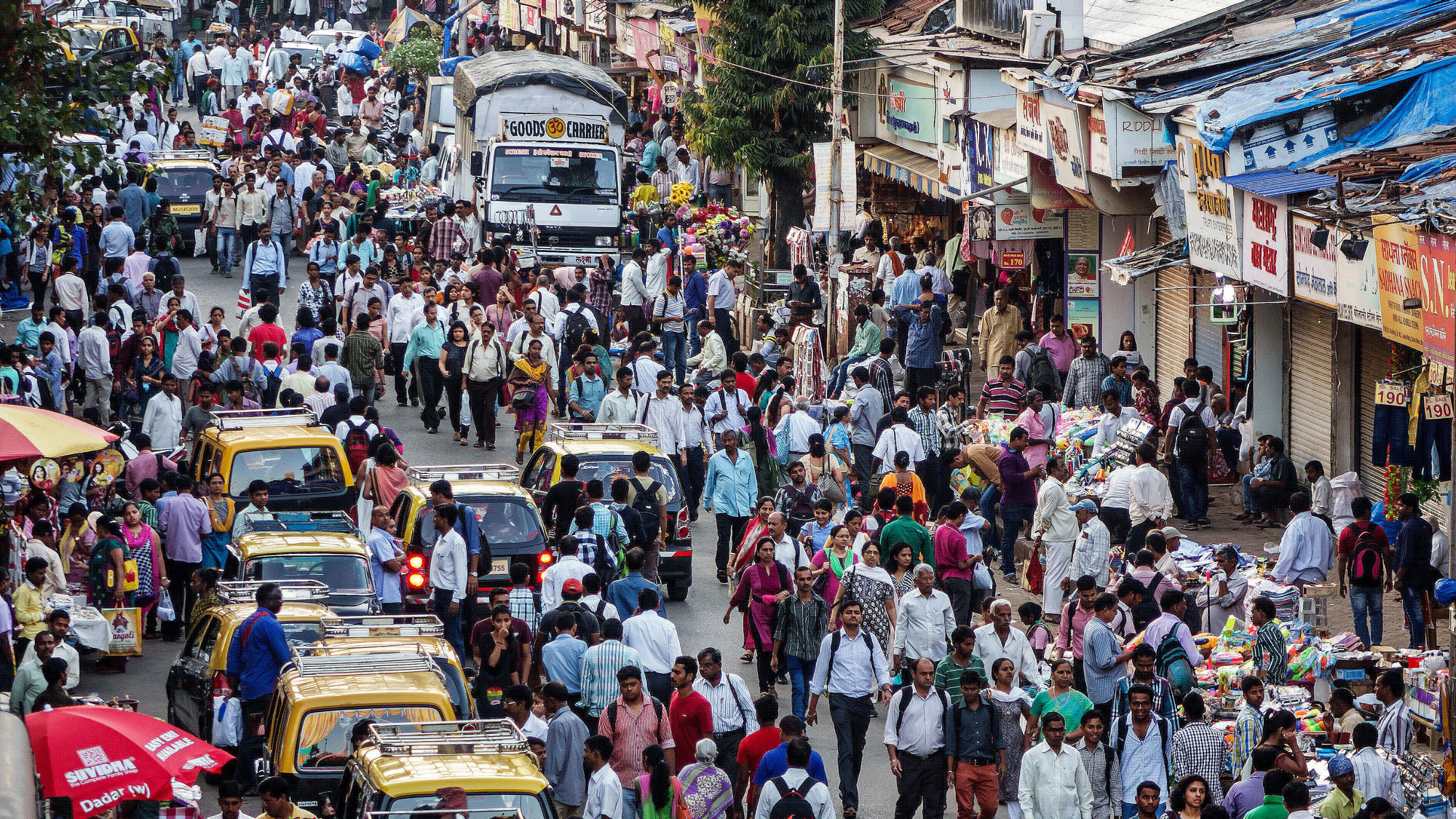India’s demographic landscape is undergoing significant changes, according to a report by SBI Research. While the country’s population growth is slowing down, the proportion of the working-age population is on the rise.
These shifts could have profound implications for India’s economic future, urban development, and social structure. By 2031, the working-age population ratio is expected to reach a substantial 64.4%, positioning India as a key player in the global workforce despite its declining population growth rate.
Slowing Population Growth
India, once known for its rapid population growth, is witnessing a considerable deceleration in its growth rate. The average annual growth rate, which stood at 2.2% in 1971, has now dropped to a projected 1.0% by 2024.
This slowdown has been occurring progressively over the years, marking a major transformation in India’s demographic trends. According to SBI Research, the national population is expected to range between 138 and 142 crores in 2024, a reflection of this declining growth pattern.
Read : US-China Tensions Are a Huge Opportunity for India: Jamie Dimon
The slowdown is accompanied by a changing age structure. The proportion of children aged 0-14 years has been decreasing steadily, falling from 30.9% in 2011 to an estimated 24.3% in 2024. This shrinking young population signifies the beginning of a shift in India’s population pyramid, with fewer children and a larger number of older adults.
The SBI report also highlighted that India’s elderly population, those aged 60 years and above, is projected to grow from 8.4% in 2011 to 10.7% by 2024 and could reach 13.1% by 2031.
Read : India is Neutral, This is a War Between Russia and the West: Russia After Modi Visit
This growing elderly population poses unique challenges, especially in terms of healthcare and social services, but the declining birth rates and slowing population growth are not uniformly distributed across the country.
Southern states like Tamil Nadu, Andhra Pradesh, and Telangana are experiencing sharp declines in population growth, while northern states such as Uttar Pradesh and Bihar continue to see population increases, which help to balance the overall demographic outlook for India.
Rising Working-Age Population
Despite the slowing population growth, India’s working-age population, defined as those aged 15-59 years, is on the rise, making up a greater proportion of the overall population.
According to SBI Research, the working-age population has grown steadily from 55.4% in 1991 to 60.7% in 2021. Projections suggest that by 2031, this figure will climb further to 65.2%. This increase in the working-age population is an important trend, as it signals the potential for increased economic productivity and growth.
As developed countries face the challenges of an aging workforce, India’s growing demographic dividend—the surplus of working-age people relative to dependents—offers a unique advantage.

The report suggests that India is likely to contribute approximately 25% of the global incremental workforce over the next decade, a significant statistic that underscores the country’s potential as a major economic player on the global stage.
The increasing working-age ratio comes with the expectation that India’s economy could be boosted by this demographic dividend, as a larger proportion of the population enters the workforce and contributes to economic activity.
However, this demographic shift also necessitates investments in education, skill development, and job creation to ensure that this burgeoning workforce is adequately prepared and employed.
Urbanisation and Changing Demographics
India is not only experiencing shifts in its population size and age structure, but it is also becoming increasingly urbanised. In 2011, approximately 31.1% of the population lived in urban areas.
This figure is expected to rise to between 35% and 37% by 2024, reflecting the growing movement of people from rural areas to cities in search of better economic opportunities and living conditions.
As urbanisation accelerates, the number of cities with populations exceeding one million is also expected to rise. In 2011, there were 52 such cities in India. By 2024, this number is projected to grow to between 75 and 80, a dramatic increase that underscores the rapid pace of urban expansion.
This growth in urban centers presents both opportunities and challenges, as cities will need to accommodate larger populations while ensuring that infrastructure, housing, and public services keep pace with the influx of people.

The trend of increasing urbanisation is accompanied by changes in India’s median age. In 2021, the median age was 24 years, but this is expected to rise to 28-29 years by 2024.
Despite this rise, India will continue to have one of the youngest populations in the world, which further emphasizes the importance of ensuring that the country’s young and growing workforce is equipped with the skills and opportunities needed to drive economic growth.
India’s demographic transformation is multifaceted, with slowing population growth, a rising working-age population, and increased urbanisation all happening simultaneously.
These shifts will undoubtedly shape the country’s economic and social landscape in the coming years, as India prepares to leverage its demographic dividend to fuel future growth.
While the overall population is growing at a slower rate, the increase in the working-age population presents a significant opportunity for economic growth.
However, it also requires careful planning and policy interventions to ensure that India’s workforce is well-prepared for the future. Investments in education, vocational training, and job creation will be essential to maximize the benefits of this demographic dividend.

The SBI report highlights the importance of managing the growing elderly population as well. As the percentage of older adults rises, India will need to ensure that its healthcare system and social services can adequately support this demographic.
This is particularly important in regions experiencing slower population growth, such as the southern states, where the proportion of elderly residents is expected to be higher.
In addition to addressing the needs of its aging population, India must also manage the challenges of rapid urbanisation. As more people move to cities, governments at both the national and local levels will need to invest in infrastructure, transportation, housing, and public services to accommodate the growing urban populations. Failure to do so could result in overcrowding, strain on resources, and reduced quality of life for urban residents.
India’s demographic changes are not uniform across the country, and regional variations will require tailored policy approaches. While northern states like Uttar Pradesh and Bihar continue to drive overall population growth, southern states are seeing significant declines.
This could lead to shifts in political representation and resource allocation, as regions with faster-growing populations may require more infrastructure and services.
Despite these challenges, the rise in the working-age population offers a unique opportunity for India to become a global economic powerhouse. The country’s growing workforce, combined with its young population, positions India as a key player in the global economy.
However, realizing this potential will require significant investments in education, training, and job creation, as well as careful management of urbanisation and aging population challenges.
The slowing of India’s population growth, combined with the rise in the working-age population, presents both opportunities and challenges.
As India’s demographic dividend grows, it could serve as a powerful multiplier for economic growth, but only if the country invests in the necessary infrastructure, education, and services to support its population.
The SBI report provides valuable insights into India’s changing demographic landscape, highlighting the need for careful planning and policy interventions to ensure that the country can harness its demographic potential for future growth.
let’s enjoy few years on earth with peace and happiness….✍🏼🙏

